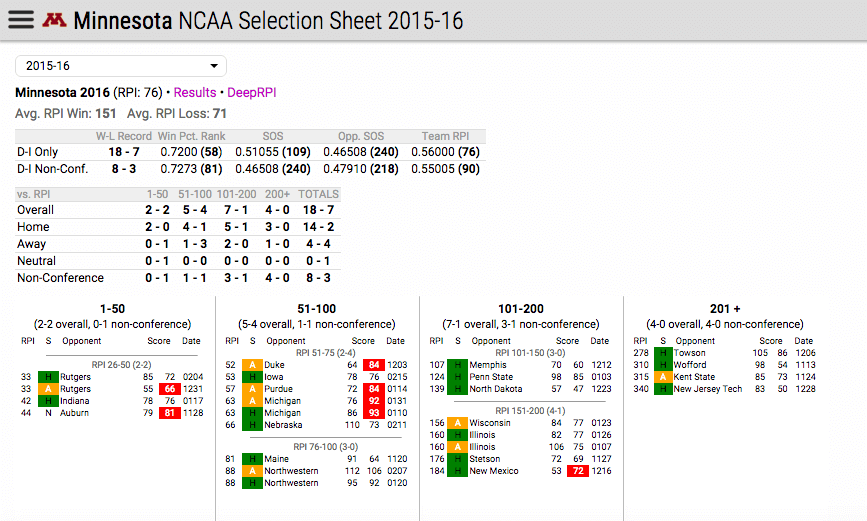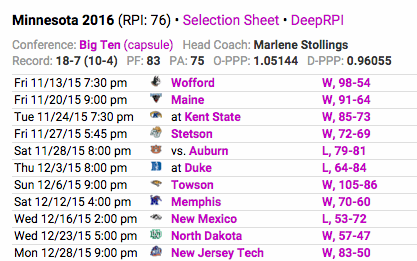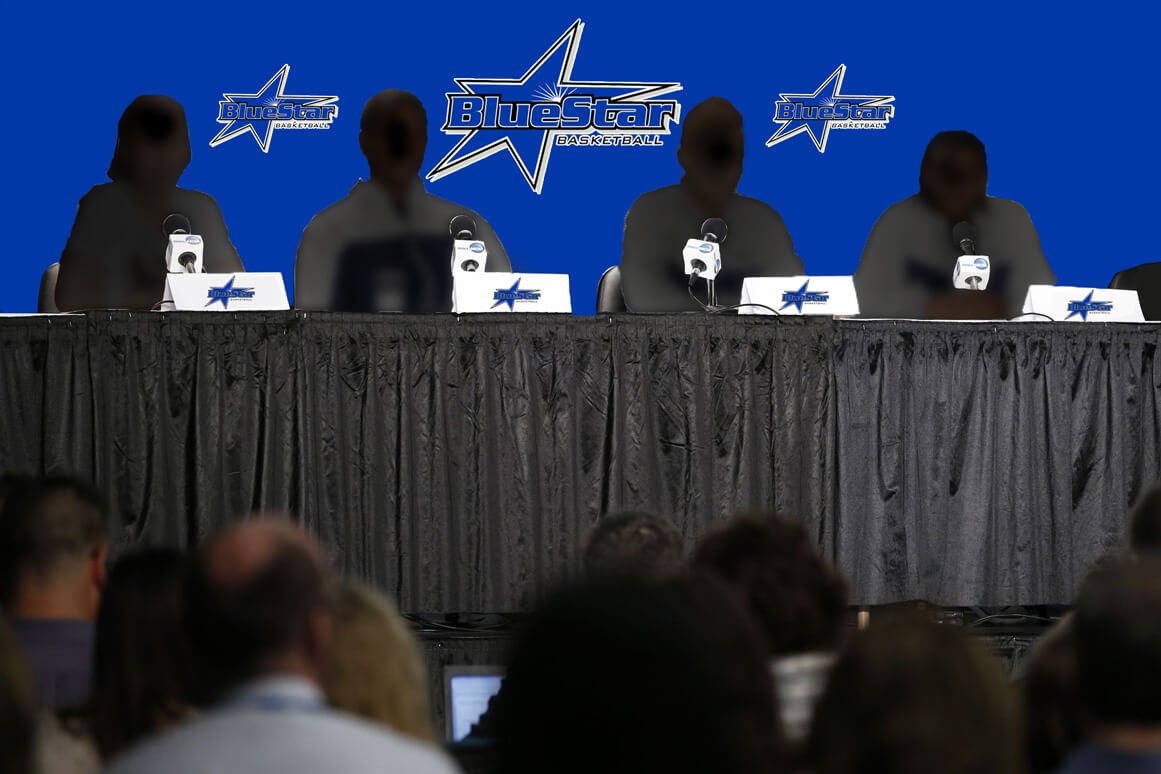How did Rachel Banham follow up her monumental 60-point game on Super Bowl Sunday?
By draining a 3-pointer at the buzzer Monday night in Minnesota’s thrilling 78–76 victory over Iowa. With eight seconds to play and her team trailing by a point, Banham worked off a double screen to pour in the game-winner. Sensational stuff.
Yeah, but she had only 35 for the Gophers (along with nine boards and eight assists), who are carving out a nice season for themselves at just the right time.
Banham’s even getting props from Kobe Bryant for her scoring feats. She’s overcome a torn ACL and returned for her senior season looking better than ever, surpassing Lindsay Whalen as Minnesota’s career scoring leader.
But it’s also a crying shame that Banham may have to perform even more Hurculean feats—topping Kobe’s 81, perhaps?—to help Minnesota just get a bid to the NCAA women’s tournament.
It’s really, really a shame, since at this writing Minnesota is 18–7 and in third place in the Big Ten at 10–4. The Gophers are playing some of their best basketball of the season, having won eight of their last nine games. In two of those games, including that incredible double-OT win at Northwestern in which Banham scored 60, they’ve scored 110 points or more.
Of the 15–20 bubble teams I see (mostly from the Power 5 conferences, plus the AAC, Atlantic 10 and Big East), Minnesota holds up better than most of the others in just about every single measurement.
Except for that darn RPI.
The win over Iowa lifted the Gophers from 81 to 76 in the RPI. That’s hanging-by-their-fingernails-on-the-bubble range.
RPI stands for Ratings Percentage Index, a computerized figure that factors in a team’s Division I winning percentage (25 percent), a team’s opponents’ Division I winning percentage (50 percent) and a team’s opponents’ opponents’ Division I winning percentage (25 percent).
It’s not just about how many games you win, but the quality of those wins, generally speaking a team’s Strength of Schedule (SOS).
As of this writing, Minnesota’s SOS is 109 overall and in non-conference play, it’s 240.
Gah!
It’s hard to make an argument for the Gophers getting in. I wouldn’t put them in at the moment. ESPN bracket expert Charlie Creme doesn’t have them in. Not in First Four Out, nor in the Next Four Out.
Just Out. Period.
Because of that darn RPI.
Last season, Miami (Fla.) had the lowest RPI for an at-large major conference team at 66. A win over Notre Dame undoubtedly helped the Hurricanes, who were 2–9 against the Top 50 RPI, and had an SOS of 45 and a non-conference SOS of 269.
There is a similar, but difficult, path that’s doable for Minnesota, which has four regular season games left. The Gophers are playing the two teams above them (Ohio State, Maryland) in the Big Ten standings and the two directly below them (Michigan State, Indiana), although three of those games are on the road.
Oregon State, Arizona State and UCLA are among the latest Top 10 seeds revealed by the NCAA women’s basketball committee, reflecting excellent RPI numbers that have resulted from a conscious effort by Pac 12 coaches to improve non-conference scheduling.
Maryland’s No. 9 seed may seem low, given that the Terrapins have lost only to UConn and Ohio State (twice). But of the Top 10 NCAA seeds, Maryland has the lowest RPI (11) and SOS (56) and second-lowest non-conference SOS (113).
These may seem like very close distinctions to make among very closely matched teams, but the various data points exist for precisely those reasons.
Here is the official NCAA women’s RPI, which doesn’t include SOS, Top 50 RPI records, etc. For that I use data at Women’s Basketball State, which is a subscription site, but an affordable one. In addition to RPI, SOS and team selection sheet information, it also includes advanced statistics, NCAA women’s tournament histories by team and more.
The deeper you dig down into Minnesota’s numbers, the more troublesome those numbers become for the Gophers.
Against the Top 50 RPI teams, Minnesota is 2–2, its best wins being over Big Ten rivals Rutgers (33) and Indiana (44). The losses have been to Rutgers and Auburn (44), which is streaking in the SEC and in a similar spot as Minnesota.
Against the Top 51–100 RPI teams, Minnesota is 5–4, including a loss to Duke, which may miss the NCAA women’s tournament. A loss to New Mexico (184) hurts even more.
When the committee makes comparisons, it places together team statistical profiles, what it calls “nitty gritty” sheets, typically two at a time. Here’s a snapshot of Minnesota’s:

A replica of Minnesota’s “nitty gritty,” sheet with data used to evaluate teams for inclusion and seeding in the NCAA women’s tournament bracket. (From wbbstate.com)
Say the committee decides to compare Minnesota and Oregon, which got off to an 0–5 start in Pac 12 play and had an RPI in the 80s. The Ducks (RPI 58, up from the 80s) are also hot, and they close out the regular season against UCLA, USC, Cal and Stanford.
But Oregon is 1–6 vs the Top 50 RPI, has an SOS of 87 and a non-conference SOS that’s worse than Minnesota’s, at 303.
If you were sitting in that NCAA women’s tournament selection committee room today, which team would you choose? It’s a hard call to make, and I’m not sure how I would vote.
There are further comparisons to be made between Minnesota and other bubble teams, including fellow Big Ten teams Rutgers, Indiana, Purdue, Nebraska, Michigan and Iowa.
With more teams on the bubble than likely to be selected for the NCAA women’s tournament at this point, the Big Ten tourney may be as crucial as it’s ever been.

Minnesota played only two non-conference games against teams from power leagues, and lost them both.
The Gophers feasted on a non-conference slate that included Wofford, Kent State, Towson and New Jersey Tech—teams with bad records in mid-major and small conferences—but are now pressed for wins against the best teams on their schedule.
The art of scheduling is hard to get right, but there’s just got to be a more concerted effort to play better teams. Teams in power leagues (and some at the mid-major level) have been dodging good OOC schedules for too many years. There’s too much data, and much more scrutiny in recent years, for them to keep placing easy fruit to pick on the early schedule. The NCAA women’s tournament selection committee has been clear for a while now that good RPI and SOS numbers really do matter.
What’s been happening in the Pac 12 could be a blueprint for other teams and leagues, if they’d embrace the challenge of boosting their schedules—and their team’s chances of getting NCAA women’s tournament bids—before the desperation of February sets in.
For all of the ballyhooed changes that have taken place and been talked about in the women’s game in recent years, improved scheduling isn’t among them. This should be a higher priority.
Banham happily dubs herself the “Maroon Mamba,” in honor of her idol Kobe, who’s among many of the new fans she’s made in recent weeks.
Unless she’s got some more serious Mamba-like games in her, however, those exploits may not be on display at The Big Dance.
There’s no dancing around that.
Wendy Parker is a sportswriter and web editor who has covered women's basketball since the early 1990s. She is a correspondent for Basketball Times and formerly covered women's and college sports, soccer and the Olympics at The Atlanta Journal-Constitution. She is the author of "Beyond Title IX: The Cultural Laments of Women's Sports," available on Amazon, and the creator of Sports Biblio, a blog about sports books and history.




